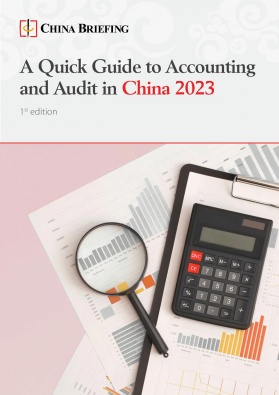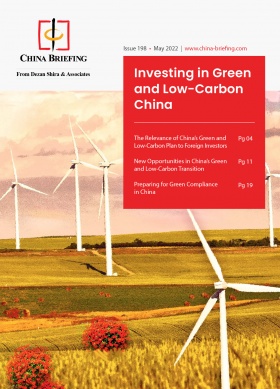China-Mongolia: Bilateral Trade, Investment, and Future Prospects
The state visit of the Mongolian President Ukhnaa Khurelsukh marks a new height in China-Mongolia relations. As the two countries plan the development of their cooperation against the background of the COVID-19 pandemic and global uncertainties, we discuss their existing bilateral trade and investment relations. China has been Mongolia’s top investment source and trade partner for 18 consecutive years, while Mongolia is an active member of the Belt and Road Initiative.
China and Mongolia established their diplomatic ties in 1949. In 1984, both countries started to map and demarcate their borders, culminating in the 1988 Treaty on Borders Control. Since then, Mongolia has pursued a more independent policy and friendly relations with China, which in turn has become Mongolia’s biggest trade partner and source of foreign investment. In particular, Beijing has increased its investments in the mining industry, gaining more access to Mongolia’s basin of natural resources.
In October 2022, the Chinese Minister of Commerce, Wang Wentao, and the Minister of Economy and Development of Mongolia, Ch. Khurelbaatar, co-chaired the 17th meeting of China-Mongolia Joint Commission on Trade and Economic Cooperation, where they engaged in a thorough discussion about how to implement the significant agreement reached by leaders on trade and economic fronts and advance the growth of the bilateral business relations. During the meeting, the two parties announced future plans to better integrate the Belt and Road Initiative (BRI) with the Steppe Road program, increase bilateral trade, further deepen investment cooperation, and intensify business cooperation at the subnational level.
China-Mongolia bilateral trade
The trade turnover between the two countries has been steadily increasing, growing by 38 percent (US$2.8 billion) in 2021 compared to the previous year. Trade volume between China and Mongolia reached US$10.1 billion in 2021 with exports valued at US$7.64 billion and imports at US$2.49 billion.
The share of China in Mongolia’s exports has shifted between 70-90 percent for the past six years, remaining consistently high. In 2021, Mongolia exported a total volume of goods worth US$7.63 billion into China, with mining products making up 93 percent of it. This is despite the decline in volumes of mining products due to transportation and logistics issues linked to the pandemic.
| Top 5 Products Exported from Mongolia to China in 2021 | |
| Product category | Amount (million US$) |
| Ores slag and ash | 4,240 |
| Mineral fuels, oils, distillation products | 2,760 |
| Wool, animal hair, horsehair yarn, and fabric | 282.29 |
| Salt, sulphury, earth, stone, plaster, lime, and cement | 98.18 |
| Copper | 88.74 |
| Source: United Nations COMTRADE | |
China’s exports to Mongolia reached US$2.23 billion in 2021, a 31 percent growth year-on-year.
| Top 5 Products Exported from China to Mongolia in 2021 | |
| Product category | Amount (million US$) |
| Vehicles other than railways, tramways | 494.49 |
| Machinery, nuclear reactors, boilers | 328.19 |
| Mineral fuels, oils, distillation products | 200.75 |
| Articles of iron or steel | 193.82 |
| Electrical, electronic equipment | 160.46 |
| Source: United Nations COMTRADE | |
China-Mongolia bilateral investment
China and Mongolia benefit from comprehensive strategic cooperation that is both consistent and deepening. Of the 5,800 legal firms registered in Mongolia, 1690 are businesses reporting Chinese investment and paying taxes.
China is Mongolia’s largest investor, contributing 21 percent of the nation’s foreign direct investment (FDI) and more than 50 percent of the foreign equity in Mongolian enterprises. China has made investments to the tune of US$108 million in Mongolia, of which 68 percent are in the mining industry and 21 percent are in the trade and food industries.
Mongolia’s role in the BRI
The Mongolian government presented its Steppe Road initiative to Beijing and Moscow in the spring of 2014, immediately following the BRI’s launch and Russia’s endorsement of it. This initiative aims to construct roads, rails, oil and gas pipelines, and electric grids between Russia and China through Mongolia. In August and September 2014, the Chinese and Russian presidents were persuaded to establish trilateral economic connections when visiting Mongolia. A year later, the BRI conceptual document featured Mongolia as one of the six economic corridors in this region, and the leaders of China and Russia agreed to combine the three plans into one – the China-Russia-Mongolia economic corridor.
China-Mongolia cooperation projects have benefited from BRI. China has significantly boosted its aid to Mongolia since the BRI was announced, provided preferential export buyer’s credit, and carried out several significant projects that were beneficial to the local social and economic growth. Approximately 100,000 jobs have been generated in Mongolia and nearly US$2 billion deposited in taxes because of direct investments or projects undertaken by Chinese enterprises.
Mongolia has backed all kinds of Chinese BRI programs, joined the Asian Infrastructure Investment Bank (AIIB), and started looking to Chinese banks for funding for potential infrastructure projects.
China and Mongolia signed a Memorandum of Understanding (MoU) on BRI cooperation in April 2017 during the first Belt and Road Forum. Documents establishing a trilateral intergovernmental working group and cooperating on 32 projects for the China-Mongolia-Russia Economic Corridor were signed in that occasion.
| Projects of the China-Mongolia-Russia Economic Corridor | |
| Type | Number |
| Transportation and Infrastructure | 13 |
| Industrial sector | 2 |
| Energy sector | 1 |
| Facilitation of trade | 4 |
| Environment | 3 |
| Education, science and technology | 3 |
| Humanitarian | 3 |
| Agriculture | 1 |
| Medical Science | 1 |
| Source: Mongolian Institute for Innovative Policies, 2020 | |
China-Mongolia comprehensive strategic partnership
In 2014, following his diplomatic visit to Ulaan Baatar, Chinese President Xi Jinping and his Mongolian counterpart at the time, Tsakhiagiin Elbegdorj, signed a joint declaration to upgrade bilateral ties to a comprehensive strategic partnership. The declaration started a new chapter of China-Mongolia relations.
The China-Mongolia Strategic Partnership provides a blueprint for good neighborly co-existence. China is advancing its strategy of formalizing ties with its smaller neighbors, and Mongolia gains political acceptance, economic advantages, and security guarantees while adhering to its foreign policy of preserving harmonious ties with both of its enormous neighbors, China and Russia.
One of the main chapters in the cooperation highlights economic exchanges. China benefits from its strategic alliance with Mongolia, accessing the country’s natural resources and trade routes, besides better integration of Chinese bordering provinces with its neighbor.
Another focal point in the strategic partnership is the promotion of intercultural dialogue between the two countries.
China-Mongolia major trade and investment agreements
China and Mongolia have signed two bilateral treaties to facilitate investment and business exchange between the two countries – a bilateral investment treaty (BIT) and a double taxation avoidance (DTA) treaty.
BIT
The China-Mongolia BIT, signed in 1991, guarantees protection to investors and their investments of both contracting countries in the other contracting country. This is codified in the most-favored-nation (MFN) clause, which also ensures that investors from the other contracting country receive the same treatment as that extended to investors from each party’s own country and investors from a third country.
Investors covered by the BIT include:
- Citizens of the PRC and Mongolia; and
- Companies legally established within the territories of the PRC and Mongolia.
Meanwhile, the term “investments” covered by the BIT refers to:
- Movable and immovable property and other property rights, such as mortgages and pledges;
- Shares, stocks, and other types of participation in companies;
- Claims to money or to any other performance with economic value;
- Copyrights, industrial property, know-how, and technological processes; and
- Concession conferred by law including concessions for exploration and exploitation of natural resources.
The BIT also guarantees investors from both countries the right to transfer profits derived in the other contracting party’s territory back to their home, which include:
- Profits, dividends, interests and other legitimate income;
- Amounts from total or partial liquidation of investments;
- Payments made pursuant to a loan agreement in connection with investment;
- Royalties;
- Payments of technical assistance or technical service fee, management fee;
- Payments in connection with projects on contract; and
- Earnings of nationals of the other Contracting State who work in connection with an investment in the territory of the one Contracting State.
The BIT includes articles on dispute mechanisms, including litigation in a neutral international tribunal.
DTA
Upon the establishment of the modern tax administration of Mongolia in 1991, China was the first country to sign the Agreement for the Avoidance of Double Taxation and the Prevention of Fiscal Evasion with respect to Taxes on Income with the Government of Mongolia (China-Mongolia DTA).
The DTA applies to “taxes on income” imposed on behalf of each Contracting State. Taxes on income refer to all types of taxes imposed on income, including income taxes on sales of movable and immovable property and income taxes on increases in property valuation.
The DTA covers the following taxes in China:
- Individual income tax;
- Income tax for enterprises with foreign investment;
- Income tax concerning foreign enterprises; and
- Local income tax.
To understand China’s tax regime, see our country portal here.
Meanwhile, the Mongolian taxes covered by the DTA are:
- Individual income tax;
- Income tax for enterprises with foreign investment and foreign enterprises; and
- Local income tax.
In addition, the China-Mongolia DTA also extends to similar taxes to those reported at the time of signature, which may appear in the future. Moreover, the competent authorities from both countries should keep each other updated on any substantial changes in their respective taxation law.
Under the DTA, business profits are only taxed in the country in which the company has a “permanent establishment”, except in cases where the company has a permanent establishment and conducts business in the other country as well. In this case, only the profits that are attributable to each country’s permanent establishment are taxed by the relevant country.
A company has a “permanent establishment” if it has any of the following in one of the contracting countries:
- A place of management
- A branch
- An office
- A factory
- A workshop
- A mine, an oil or gas well, a quarry, or any other place of extraction of natural resources
It also includes:
- A building site, a construction, assembly, or installation project, or supervisory activities in connection therewith, but only where such site, project, or activities continue for a period of more than eighteen
- The furnishing of services, including consultancy services, by an enterprise of a Contracting State through employees or other engaged personnel in the other Contracting State, provided that such activities continue for the same project or a connected project for a period or periods aggregating more than eighteen months.
To learn more about the China-Mongolia DTA, refer to our dedicated article here.
Multilateral treaties
China and Mongolia are both WTO members, which by extension means they are both parties to a range of multilateral agreements on trade and investment. These treaties include:
- The Agreement on Trade-Related Aspects of Intellectual Property Rights (TRIPS), requires WTO members to extend intellectual property (IP) rights to the IP owners in any member state or region. It includes a most-favored-nation (MFN) clause, guaranteeing equal treatment for IP rights protection for all member countries and regions, and offers dispute resolution and compensation mechanisms.
- Agreement on Trade-Related Investment Measures (TRIMs), which prohibits members from implementing investment measures that have the effect of restricting trade with other members, such as local content requirements (requirements for a company to use locally-produced goods or local services in order to operate in the market).
- General Agreement on Trade in Services (GATS), which guarantees MFN status to service providers of any WTO member (except governmental services such as social security schemes, public health, education, and services related to air transport).
The outlook of bilateral ties stays positive, bolstered by Khurelsukh’s recent state visit to China
The positive outlook of China-Mongolia relations is underscored by Mongolian President Ukhnaagiin Khurelsukh’s state visit to Beijing from November 27 to 28. After holding talks with Xi Jinping, the two presidents witnessed the signing of bilateral cooperation documents covering economy, trade, investment, customs, and desertification mitigation.
The two sides issued a Joint Statement on Advancing the Comprehensive Strategic Partnership in the New Era Between the People’s Republic of China and Mongolia, agreeing to work together to advance modernization, peaceful co-existence, and win-win cooperation.
China is prepared to collaborate with Mongolia to create a “community with a shared future” for the two nations as they face an increasingly unstable and unreliable international environment. The Mongolian government has accelerated the construction of the railway connecting the two countries and increased the railway channels for import and export to China. At present, the railway lines from Tawang Tolgoi Coal Mine in South Gobi Province to Gashusu Haitu Port in Mongolia, and Zongbayan in East Gobi Province to Hangji Port in Mongolia are both operational.
China and Mongolia emphasized in their joint statement that they will actively promote the construction of new cross-border railways and open up more interconnection channels as soon as possible. This focus on cross-border infrastructure will have a positive impact on cross-border trade and commerce and the transit of goods and services via Mongolia.
About Us
China Briefing is written and produced by Dezan Shira & Associates. The practice assists foreign investors into China and has done so since 1992 through offices in Beijing, Tianjin, Dalian, Qingdao, Shanghai, Hangzhou, Ningbo, Suzhou, Guangzhou, Dongguan, Zhongshan, Shenzhen, and Hong Kong. Please contact the firm for assistance in China at china@dezshira.com.
Dezan Shira & Associates has offices in Vietnam, Indonesia, Singapore, United States, Germany, Italy, India, and Russia, in addition to our trade research facilities along the Belt & Road Initiative. We also have partner firms assisting foreign investors in The Philippines, Malaysia, Thailand, Bangladesh.
- Previous Article China-UK Trade and Investment Ties
- Next Article China Officially Launches New Private Pension Scheme – Who Can Take Part?








